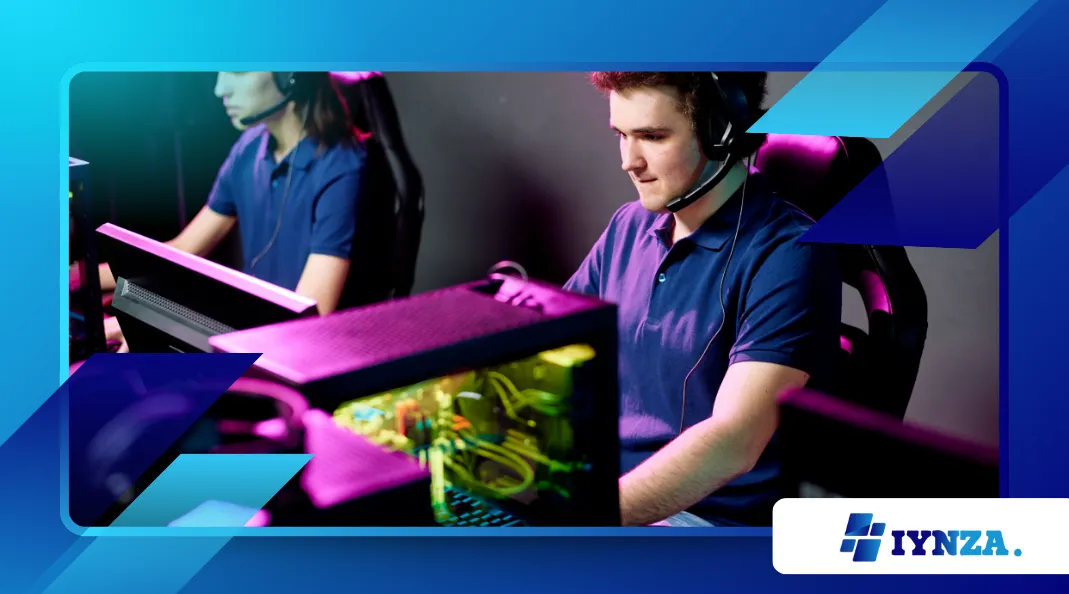How to Improve Your Reaction Time for Competitive Gaming

In the fast-paced world of competitive gaming, reaction time can be the difference between victory and defeat.
Anúncios
Whether you’re battling in a first-person shooter, outmaneuvering opponents in a MOBA, or executing split-second decisions in a fighting game, your ability to react quickly and accurately is crucial.
But how can you sharpen this skill to gain an edge over your competitors?
This guide dives into proven strategies, backed by science and expert insights, to help you optimize your reaction time and elevate your gameplay.
Improving your reaction time not only enhances your performance but also boosts your confidence in high-stakes situations.
As you implement these strategies, you’ll likely notice a significant improvement in your overall gameplay experience.
Why Reaction Time Matters in Competitive Gaming
Competitive gaming demands more than just strategy and teamwork; it requires lightning-fast reflexes.
Studies show that the average human reaction time to visual stimuli is around 250 milliseconds (ms), but elite gamers often achieve times closer to 150 ms.
This difference, though seemingly small, can determine who lands the first shot or secures the critical objective.
For example, in games like Valorant or Counter-Strike: Global Offensive, a delay of even 50 ms can mean the difference between a headshot and a missed opportunity.
Similarly, in real-time strategy games like StarCraft II, faster reactions allow players to adapt to enemy movements and execute counter-strategies more effectively.
Understanding the importance of reaction time can motivate players to invest in their training.
As competition intensifies, refining this skill can be the key to climbing the ranks and achieving your gaming goals.
+ The Best Esports Games of All Time: Which Titles Dominated the Scene?
The Science Behind Reaction Time
Understanding the mechanics of reaction time can help you improve it.
The process involves three key stages:
- Perception: Recognizing a stimulus (e.g., an enemy appearing on screen).
- Processing: Deciding how to respond (e.g., aiming and shooting).
- Execution: Physically performing the action (e.g., clicking the mouse).
Each stage can be optimized through targeted training and lifestyle adjustments.
Research indicates that practicing these stages can lead to significant improvements in overall reaction times.
By focusing on each component, players can enhance their ability to respond effectively under pressure.
For more insights into the neuroscience behind reaction time, check out Frontiers in Psychology.
1. Train Your Brain with Cognitive Exercises
Your brain is the control center for your reaction time, and like any muscle, it can be trained.
Cognitive exercises, such as:
- Aim trainers: Tools like Aim Lab or Kovaak’s FPS Aim Trainer simulate in-game scenarios to sharpen your reflexes.
- Memory games: Apps like Lumosity or Peak improve processing speed and decision-making.
- Peripheral vision drills: Practice tracking multiple objects simultaneously to enhance awareness.
These exercises not only improve your reaction time but also enhance overall cognitive function, making you a more adaptable player.
Incorporating these activities into your daily routine can lead to noticeable improvements in your gaming performance.
Additionally, engaging in these exercises can be a fun way to break up your gaming sessions while still contributing to your skill development.
2. Optimize Your Physical Health
Your body’s condition directly impacts your ability to react quickly.
Here’s how to stay in peak form:
Sleep
Sleep deprivation can slow your reaction time by up to 50%.
Aim for 7-9 hours of quality sleep per night to ensure your brain and body are functioning optimally.
Nutrition
Foods rich in omega-3 fatty acids (e.g., salmon, walnuts) and antioxidants (e.g., blueberries, spinach) support brain health.
Avoid heavy meals before gaming, as they can cause sluggishness.
Hydration
Dehydration can impair cognitive function.
Keep a water bottle nearby and sip regularly during gaming sessions.
Taking care of your physical health not only improves your reaction time but also enhances your overall well-being.
Regular exercise, even outside of gaming, can boost your stamina and focus, making it easier to maintain peak performance during long sessions.
3. Fine-Tune Your Gaming Setup
Your hardware and settings play a significant role in minimizing delays.
Consider the following:
Monitor Refresh Rate
A higher refresh rate (e.g., 144Hz or 240Hz) reduces motion blur and input lag, allowing you to react faster.
Mouse and Keyboard
Choose peripherals with low latency and high polling rates.
Mechanical keyboards and gaming mice with adjustable DPI settings can enhance precision.
In-Game Settings
Lower graphical settings to reduce input lag and increase frame rates.
Disable unnecessary visual effects that can distract or slow you down.
By investing in quality equipment and optimizing your settings, you can create a more responsive gaming environment.
This attention to detail can make a significant difference in your competitive performance, allowing you to react more swiftly to in-game events.

4. Practice Deliberately
Mindless grinding won’t cut it if you want to improve your reaction time.
Instead, adopt deliberate practice techniques:
- Focus on specific skills: Dedicate time to aim training, movement drills, or map awareness.
- Analyze your gameplay: Use replay systems to identify weaknesses and areas for improvement.
- Set measurable goals: Track your progress with benchmarks, such as reducing your average reaction time by 10 ms.
Establishing a structured practice routine can significantly enhance your skills over time.
By analyzing your gameplay and setting specific goals, you can target areas that need improvement and track your progress effectively.
For tools to help with gameplay analysis, consider platforms like Twitch for streaming and reviewing your matches.
5. Stay Calm Under Pressure
Stress and anxiety can significantly impair your reaction time.
Techniques like deep breathing, mindfulness, and visualization can help you stay composed during intense matches.
Practicing these techniques outside of gaming can prepare you for high-pressure situations.
Additionally, engaging in regular mindfulness exercises can improve your overall mental clarity and focus.
Creating a pre-game routine that incorporates relaxation techniques can also help set the tone for a successful gaming session.
6. Leverage Technology
Modern tools can provide real-time feedback to help you improve.
For example:
- Reaction time apps: Use apps like Human Benchmark to measure and track your progress.
- Biofeedback devices: Wearables like the Muse headband monitor brain activity and help you train for focus and relaxation.
These technologies can provide valuable insights into your performance and help you identify areas for improvement.
Incorporating them into your training regimen can lead to more effective practice sessions and faster progress.
Tables: Reaction Time Benchmarks and Improvement Tips
Table 1: Average Reaction Times by Category
| Category | Average Reaction Time (ms) |
|---|---|
| General Population | 250 |
| Casual Gamers | 200 |
| Professional Gamers | 150 |
++ The Future of Esports: Trends and Predictions for the Next Decade
Table 2: Tips to Improve Reaction Time
| Tip Category | Specific Action | Expected Improvement |
|---|---|---|
| Cognitive Training | Use aim trainers | 10-20 ms |
| Physical Health | Sleep 7-9 hours nightly | 15-30 ms |
| Gaming Setup | Upgrade to 144Hz monitor | 5-10 ms |
| Deliberate Practice | Analyze replays weekly | 10-15 ms |
These benchmarks and tips provide a clear roadmap for improvement.
By focusing on specific areas, you can maximize your training efficiency and achieve your desired results.
The Role of Genetics and Age
While training and lifestyle changes can significantly improve your reaction time, genetics and age also play a role.
Younger individuals tend to have faster reflexes, but consistent practice can help older gamers maintain competitive performance.
Understanding these factors can help you set realistic expectations for your progress.
Regardless of age, dedication and strategic training can lead to remarkable improvements in your gaming abilities.
Real-World Examples
Professional gamers like S1mple (CS:GO) and Faker (League of Legends) attribute their success to rigorous training regimens that prioritize reaction time improvement.
By emulating their dedication, you too can achieve remarkable results.
These players often share their training techniques and routines through streams and social media, providing valuable insights for aspiring gamers.
Following their journeys can also serve as motivation to stay committed to your own improvement.
Conclusion
Improving your reaction time is a multifaceted process that requires mental, physical, and technical optimization.
By incorporating cognitive exercises, maintaining peak physical health, fine-tuning your setup, and practicing deliberately, you can shave precious milliseconds off your responses and dominate the competition.
Remember, consistency is key—small, daily improvements compound over time to yield significant results.
So, are you ready to take your gaming performance to the next level?
Start today, and watch your reaction time transform from a weakness into your greatest strength.
